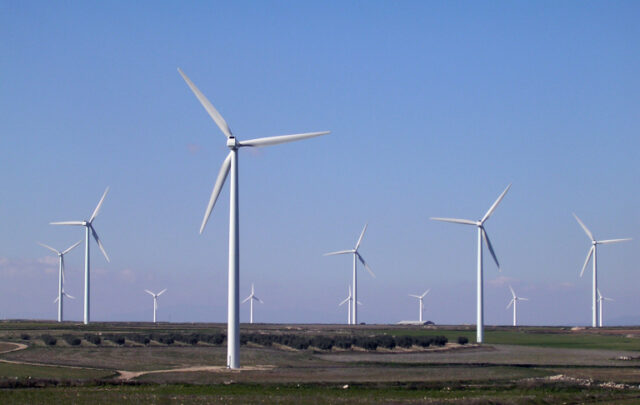When I wake up around 7:30 on a winter morning, sunlight is filtering in through the glass bottles set high in the east wall of my bedroom, and through the south-facing French doors. I stretch and do a little breath practice, cozy under my fleece blanket and lightweight quilt. So cozy I don’t want to get up. I’m not a morning person.
I throw back the covers and put on good thick socks, a sweater over my long-sleeve base layer, barn jeans over my leggings. I prod my kids to do the same. The thermometer on the kitchen shelf reads 64F. We live in a low-power house, which uses on average 5 kWh/day, about 15% what our neighbors use. And honestly, I find it more comfortable than any house I’ve lived in, and not that much less convenient.
We head out to do barn chores, which are very short because the goats are dried off and the goose and chicken flocks are truncated to their winter numbers. My five year old feeds the barn cat and the house cat. My eight year old lets the chickens out and fills their water bucket. I check the ligaments and udders on pregnant goats, trying to guess when they’ll kid.
I go back inside, but my children might play outside in the frost for a while, claiming they have “cold resistance.” I light the fire in our wood cook stove, chop a local apple for our oatmeal, swap two bottles of ice out of the tiny chest freezer into the insulated drawer we use in place of a refrigerator. All the food cooling is accomplished by about 0.5kWh and three minutes of human attention per day.

Mmm oatmeal. It’s a kid pleaser. That heat-powered fan has proved surprisingly robust. I’m impressed. I found that copper kettle sad and tarnished, lying in my aunt’s yard.
Breakfast on the table by 9:30 is usually my goal. The thermometer reads 69 or 70F, and the heat-powered fan on the stove top is blowing warm air back toward the bedrooms. An efficient pump clicks on to circulate water from the water heater (turned off at the breaker) through a heat exchanger that draws heat from the water jacket in the wood stove. This device can use as much as 0.4 kWh/day, and provides most of our hot water in the winter. With my back to the stove while I eat, I’m too warm and must remove my sweater.
After breakfast we stay at the table and do about an hour of homeschool. Sometimes workbooks, sometimes worksheets I build, sometimes games. Lately we’re using CSUnplugged to learn computer science concepts. All the activities are done with scrap paper and markers, no power necessary. I use a little data and electricity on my phone to download the activity. My phone, barn headlamp and other USB devices charge from a partially-functional GoalZero Yeti 400 solar power system (I wouldn’t recommend it, but that’s a whole nother story).
Around 11 it’s time to play. The kids dump out puzzles or Legos if it’s raining, go climb trees if it’s not. I might break kindling, dig in the sleeping garden, hang machine-washed laundry on an outdoor rack, sweep the floor, write on my laptop (about 1/5 the energy usage of a desktop) or sew something on my treadle-powered Singer 66.

Dried with the ideal combination of wind and solar energy. I live in a humid climate, and I find a drying rack works very well with good management. Although I admit it’s easier now that I don’t have two in cloth diapers!
I do daily physical therapy for my chronic pain condition. Last summer I was enjoying running the perimeter of our land for my exercise, but this proved too much impact for my spine, which has narrowed disk spaces like you might see in a very elderly person rather than a middle-aged woman like me. I bought a perfectly adequate unpowered elliptical machine from my local ReStore. Because our house is 725 square feet, the home gym is on the patio. The air is fresh, and I get an excellent view of my chicken flock tilling the garden, or maybe some ducks or herons in the pond.
When we come back together for lunch the heat from the breakfast fire has dispersed though all the rooms, and the kitchen thermometer reads 66F on a cloudy day. If it’s a sunny day, solar gain through our many south-facing windows is good for a solid five-degree bump, no matter the outdoor temperature. Lunch is mostly uncooked: veggie sticks and homemade hummus, apples with peanut butter, home-canned pickles or sauerkraut, maybe a little toast from the toaster oven. One of the kids helps me wash the breakfast and lunch dishes by hand, which takes about 10 minutes. I notice whether the water is hot enough for showers later.
After lunch, kids sit down for an hour of rest time. On a screen hooked to a laptop they watch one of many beloved documentaries or a movie. The entertainment electronics draw power from an outlet that is controlled by a wall switch, so they don’t waste energy for the 22 hours a day they’re not in use. I go back outside to graft some trees, clean out the barn, chop a little wood, plant some seedlings. Winter is the season of catch-up.
Because the house we built has no forced air system, on most cool days I open some doors and windows for a few minutes to allow an air exchange. The house is banked into the ground on the north and east walls, and it’s very “heavy” with lots of thermal mass, so most of the heat is retained even as the air leaves. This is a good moment to bring in the laundry rack if it hasn’t completely dried. I built it to fit perfectly through the front door.

Not the prettiest beast, but it sure does make a lot of nice hot water.
If the water isn’t quite warm enough for a shower, I turn on the water heater for a few minutes, then turn it back off. I can light a dinner fire, shower the whole household and plug the wood stove pump back in before the water in the stove jacket boils. Even if I forget in the dinner rush and the jacket water does boil, it’s just a little extra steam in the room that houses our compost toilet, because the wood stove side of the circuit is open-vented for safety. We don’t run the pump while showering because it mixes the water in the pressurized tank, bringing cool water to the shower head.
Cooking dinner on the wood stove is an absolute pleasure on a cold day. The thermometer gradually rises into the mid or even the high 70s, although it is still cool in the back of the house. My hands warm up. My shoulders, eternally tight and painful, relax in the cozy heat. I watch the fire through the glass, rearranging or adding to it to achieve the heat I want. It hardly takes any longer than cooking with an electric stove, and I haven’t burned anything to inedibility since we moved in. I used to do that all the time with electric. Just about the time dinner is ready, the oven is hot for bread, crackers or cookies.
On a very cold day I keep the stove going through the evening while I watch something or read, then let it die when I go to bed. On a warmer day, I don’t feed it again after dinner. We use just over a cord of wood per year, which does all our winter heat and cooking, and much of our hot water. Our electricity consumption tends to be lowest in the months when our neighbors’ is highest, so we’re driving less excess demand, typically the dirtiest electricity. No, wood isn’t the cleanest thing. It’s a trade off between efficiency and resilience (if you’re interested in the details, more about our footprint here).
I close the barn and admire the frosty stars. I swap the ice again to keep the leftovers cold, drink a cup of tea, cuddle into my quilt. Everywhere we can, we’ve traded a little more work and attention for a whole lot less power usage. And I’m okay with that.






